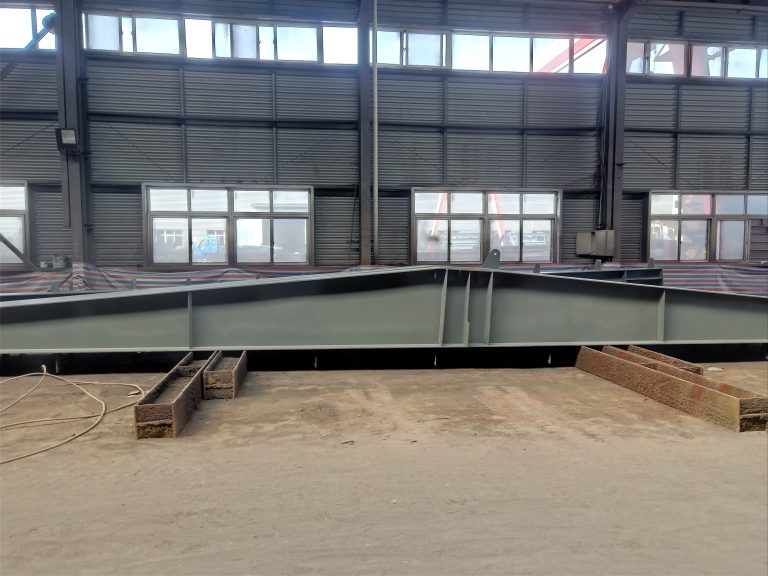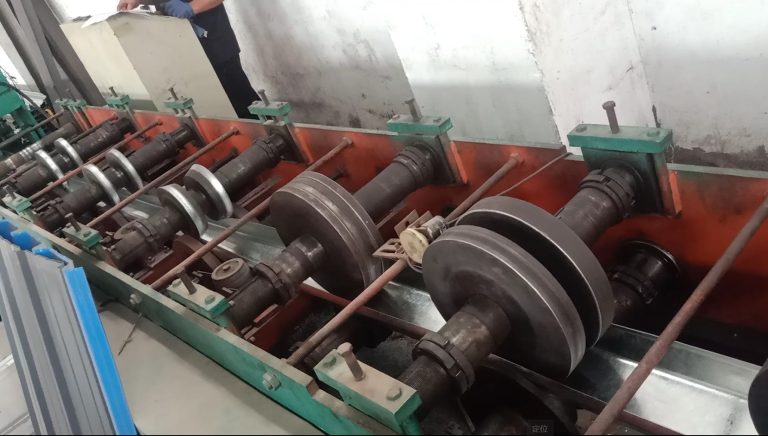Table of Contents
Benefits of Steel Structures in Urban Development
Urbanization is a global phenomenon that has been rapidly transforming the landscape of cities around the world. As populations continue to grow, the need for efficient and sustainable infrastructure becomes increasingly important. One key component of urban development is the use of steel structures, which play a crucial role in shaping the modern cityscape.
Steel structures offer a wide range of benefits that make them an ideal choice for urban development projects. One of the primary advantages of steel is its strength and durability. Steel is a highly resilient material that can withstand extreme weather conditions and natural disasters, making it an ideal choice for buildings and infrastructure in urban areas. This durability ensures that steel structures have a long lifespan, reducing the need for frequent maintenance and repairs.
In addition to its strength, steel is also a versatile material that can be easily customized to meet the specific needs of a project. Steel structures can be designed in a variety of shapes and sizes, allowing architects and engineers to create innovative and unique buildings that enhance the aesthetic appeal of a city. This flexibility in design also allows for faster construction times, which is crucial in urban areas where time is of the essence.
Another key benefit of steel structures is their sustainability. Steel is a recyclable material that can be reused multiple times without losing its strength or quality. This makes steel structures an environmentally friendly choice for urban development projects, as they help to reduce the demand for new raw materials and minimize waste. Additionally, steel structures can be easily disassembled and relocated, making them a sustainable option for temporary structures or buildings that need to be moved to a new location.

Steel structures also offer cost savings compared to traditional building materials. While the initial cost of steel may be higher than other materials, the long-term savings in maintenance and repairs make it a cost-effective choice for urban development projects. Steel structures are also lightweight, which reduces the need for heavy foundations and allows for more efficient use of space in densely populated urban areas.
The use of steel structures in urban development projects also has a positive impact on the local economy. Steel production and construction create jobs and stimulate economic growth in the communities where these projects are located. Additionally, the durability and longevity of steel structures ensure that they will continue to provide economic benefits for years to come, making them a wise investment for cities looking to attract new businesses and residents.
Overall, steel structures play a vital role in the process of urbanization by providing strength, durability, versatility, sustainability, cost savings, and economic benefits. As cities continue to grow and evolve, the use of steel structures will become increasingly important in shaping the urban landscape and creating a sustainable future for generations to come. By embracing the benefits of steel, cities can build a more resilient and efficient infrastructure that meets the needs of a rapidly changing world.
Sustainable Practices in Steel Structure Construction for Urbanization
Urbanization is a global phenomenon that has been rapidly transforming the landscape of cities around the world. As populations continue to grow, the demand for infrastructure and buildings in urban areas has increased significantly. In order to meet this demand, the construction industry has turned to steel structures as a sustainable and efficient solution.
Steel has long been recognized as a versatile and durable material that is well-suited for a wide range of construction projects. Its strength-to-weight ratio makes it an ideal choice for high-rise buildings, bridges, and other structures that require both strength and flexibility. In addition, steel is highly recyclable, making it a sustainable option for construction projects.
One of the key advantages of steel structures in urbanization is their ability to be prefabricated off-site and then assembled on-site. This reduces construction time and minimizes disruption to the surrounding area. Prefabrication also allows for greater precision and quality control, resulting in buildings that are more structurally sound and durable.
Steel structures are also highly resistant to natural disasters such as earthquakes, hurricanes, and fires. This makes them a safe and reliable choice for buildings in urban areas that are prone to these types of events. In addition, steel structures can be easily modified and expanded, allowing for greater flexibility in urban planning and development.
Another important aspect of steel structures in urbanization is their sustainability. Steel is a highly recyclable material, with a recycling rate of over 90% in many countries. This means that steel structures can be dismantled and recycled at the end of their life cycle, reducing waste and conserving natural resources.
In addition, steel structures can be designed to be energy-efficient, with features such as high-performance insulation, energy-efficient windows, and solar panels. This can help reduce energy consumption and lower carbon emissions, making steel structures a more environmentally friendly option for urban development.
Steel structures also have a long lifespan, with many buildings lasting for 50 years or more. This longevity reduces the need for frequent maintenance and repairs, saving time and money in the long run. In addition, steel structures are highly resistant to corrosion and decay, further extending their lifespan and reducing the need for replacement.
Overall, steel structures play a crucial role in the process of urbanization by providing a sustainable, efficient, and durable solution for the construction of buildings and infrastructure in urban areas. Their versatility, strength, and sustainability make them an ideal choice for meeting the growing demands of urban populations around the world.
As cities continue to grow and evolve, the importance of steel structures in urbanization will only continue to increase. By embracing steel as a sustainable and efficient building material, urban planners and developers can create cities that are not only functional and aesthetically pleasing, but also environmentally friendly and resilient to the challenges of the future.





